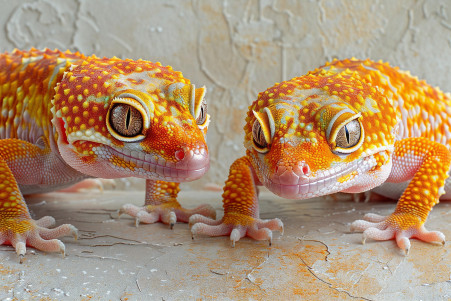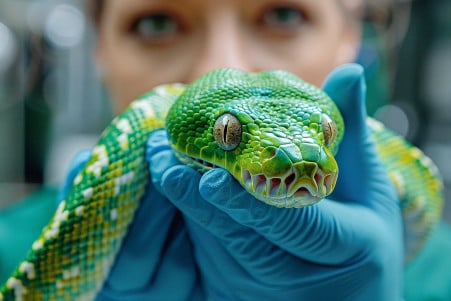Determining a Parakeet's Sex: Visual Cues, Behaviors, and Definitive DNA Testing
18 May 2024 • Updated 18 May 2024

So, how can you sex your parakeet? It turns out that you can tell quite a bit about your bird based on their physical traits and behaviors. Male parakeets are typically larger and more colorful, while female parakeets are smaller and more muted. In terms of behavior, males are more likely to be aggressive and vocal, while females are more likely to be territorial and less vocal.
To get the full picture, we'll look at research from bird scientists. This in-depth article covers studies in the fields of ornithology, animal behavior, and veterinary science. By looking at physical characteristics, behaviors, and biological markers, you'll be able to tell your parakeet's sex with confidence - an important first step in making sure you're meeting the needs of these active, social animals.
How can you tell if a parakeet is male or female?
The Cere: A Reliable Visual Clue
The cere is the area above a parakeet's beak that houses the bird's nostrils. It is a reliable visual clue to a parakeet's gender, especially in adults. According to Budgie Bubble, the ceres of adult males are typically a deep royal blue or purple, while the ceres of adult females are pale blue, brown, or tan.
That said, the color of a parakeet's cere changes as the bird grows from a chick to an adult. In fact, as Pets on Mom.com points out, the ceres of parakeet chicks that are less than 8-12 weeks old are harder to differentiate - the ceres of males may be bluish-pink or lilac, while the ceres of females may be bluish-white with a pinkish tint around the nostrils.
Cere color is considered the primary visual way to determine a parakeet's gender, but it's not foolproof. Some females will keep a lighter-colored cere even when they're adults, and Omlet warns that cere color can be hard to determine, especially in younger birds. In addition, during the breeding season, a female's cere can turn a darker brown and look crusty.
The Most Definitive: DNA Sexing Tests
DNA sexing is widely regarded as the most accurate and definitive way to determine a parakeet's sex. As Bird Vet explains, the method was first introduced in 1985 and has been proven to be 99.99% accurate for all companion bird species. It involves taking a small blood sample, typically from the bird's toenail, and sending it to a specialized lab for DNA testing.
According to the DNA Diagnostics Center, the non-invasive test uses PCR (Polymerase Chain Reaction) to look for the presence of male and female chromosomes in the bird's DNA. Bird owners can also submit a DNA sample by plucking a few feathers from the bird's chest. The lab then sends the results via email within 5 business days of receiving the sample.
As Bento Lab points out, this method is especially useful because it can be used on birds of any age and color mutation and is completely non-invasive. However, the cost of DNA sexing through a vet's office or mail-in service may be a barrier for some bird owners.
Other Physical Characteristics
In addition to the cere, there are a few other physical characteristics that can help you determine your parakeet's sex. According to Cuteness, male parakeets may be slightly larger and have more rounded heads than females. The Omlet guide also says that male parakeets have brighter, more intense coloring than females, who have more washed-out coloring.
Another potential difference is the color of the parakeet's legs. Planet Pet says that male parakeets have blue legs, while females have brown or pink legs. However, this isn't a reliable way to determine sex because all baby parakeets have pink legs until their first molt.
Despite these potential differences, Cuteness says that none of these physical characteristics are a surefire way to determine your parakeet's sex. That's because the differences between male and female parakeets are often subtle and can even vary between birds. As a result, these physical characteristics should only be used as a way to confirm the sex of your parakeet if you've already used a more reliable method, like checking the cere or DNA testing.
Behavioral Differences and Gender
In addition to the color of the ceres and DNA sexing, there are some behavioral differences that can help you determine the sex of your parakeet. According to Cuteness, male parakeets are more active and playful and will learn to talk and sing before females. Males will also perform courtship displays, including head bobbing and wing flapping, which Omlet says includes "lots of head-bobbing and feather-fluffing" and a "bubbling, liquid song."
On the other hand, females are more aggressive, territorial, and focused on nesting, according to Cuteness. They may also chew more to build a nest, while males are generally more carefree and relaxed. However, Parrot Hub warns that these behavioral differences are not as reliable as the physical differences when it comes to determining a parakeet's sex because there is a lot of individual variation.
Sexing Baby Parakeets: Obstacles and Tricks
Sexing baby parakeets under a year old is even more difficult because their physical and behavioral traits have not yet fully developed. According to the Avian Avenue Parrot Forum, the cere colors that are so reliable in adult birds are less distinct in baby birds. In fact, the ceres of baby parakeets are often more uniform in pink tones, which can make it hard to tell males and females apart.
The post on the forum says that natural light is best for taking pictures of baby parakeets because it will help bring out the subtle differences in their cere colors. In addition, Quora says that it's important to be patient when trying to sex baby parakeets because the differences in their cere colors, size, and behavior will become more obvious as they grow and mature during their first year.
To get a definitive answer when sexing baby parakeets, the Avian Avenue Parrot Forum says that it's best to consult avian professionals or use DNA sexing tests. These scientific approaches will provide a surefire way to determine a parakeet's sex no matter how old it is or what it looks like. As the parakeet grows and matures, additional observations of its behavior can also provide helpful information about its sex.
Conclusion: How to Tell the Sex of a Parakeet for the Best Care
Knowing how to tell if a parakeet is male or female is important for proper care and responsible breeding. According to Cuteness, the most reliable way to determine a parakeet's sex is by looking at the color of its cere, which is the fleshy area above the beak. Males have a solid blue or purple cere, while females have a brown, tan, or pink cere. However, these colors can be hard to discern, especially in birds that are less than a year old.
If you want to be absolutely sure of your parakeet's sex, Lafeber Pet Birds suggests DNA testing. This 99.99% accurate method requires a small blood or feather sample that is sent to a lab for analysis. While it's more expensive, DNA sexing can be used on parakeets of any age and color mutation.
Other physical and behavioral traits, such as size, feather color, and leg color, can also be used to help determine a parakeet's sex, but according to Cuteness, these are less reliable when used alone. In the end, a combination of methods, from visual to DNA, is the most accurate way to determine a parakeet's sex so you can provide the best care and breeding conditions.


